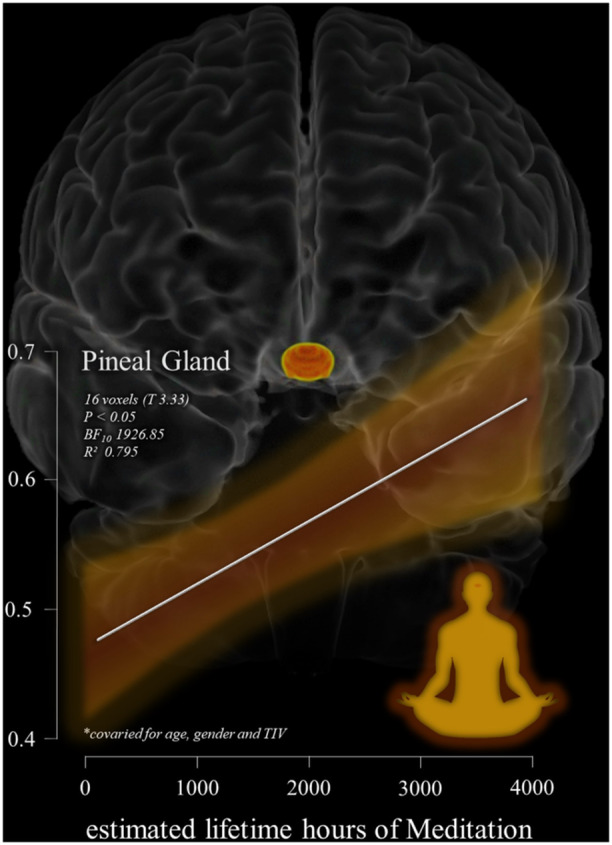
By John M. de Castro, Ph.D.
In today’s Research News article “Meditation Linked to Enhanced MRI Signal Intensity in the Pineal Gland and Reduced Predicted Brain Age” (See summary below or view the full text of the study at: https://pmc.ncbi.nlm.nih.gov/articles/PMC11822093/ ) Plini and colleagues examined the brains of long-term meditators and found that the activity of their Pineal Glands was enhanced and an indicator of brain aging was reduced. This suggests that meditation leads to less aging of the brain. This could be a mechanism whereby meditation reduces cognitive decline with aging.
Reduce brain aging with meditation.
CMCS – Center for Mindfulness and Contemplative Studies
This and other Contemplative Studies posts are also available on the Contemplative Studies Blog http://contemplative-studies.org
Study Summary
Plini ERG, Melnychuk MC, Dockree PM. Meditation Linked to Enhanced MRI Signal Intensity in the Pineal Gland and Reduced Predicted Brain Age. J Pineal Res. 2025 Mar;77(2):e70033. doi: 10.1111/jpi.70033. PMID: 39940075; PMCID: PMC11822093.
ABSTRACT
Growing evidence demonstrates that meditation practice supports cognitive functions, including attention and interoceptive processing, and is associated with structural changes across cortical networks, including prefrontal regions and the insula. However, the extent of subcortical morphometric changes linked to meditation practice is less appreciated. A noteworthy candidate is the pineal gland, a key producer of melatonin, which regulates circadian rhythms that augment sleep‐wake patterns and may also provide neuroprotective benefits to offset cognitive decline. Increased melatonin levels, as well as increased fMRI BOLD signal in the pineal gland, have been observed in meditators versus controls. However, it is not known if long‐term meditators exhibit structural changes in the pineal gland linked to the lifetime duration of practice. In the current study, we performed voxel‐based morphometry (VBM) analysis to investigate: (1) whether long‐term meditators (LTMs) (n = 14) exhibited greater pineal gland MRI‐derived signal intensity compared to a control group (n = 969), (2) a potential association between the estimated lifetime hours of meditation (ELHOM) and pineal gland signal intensity, and (3) whether LTMs show greater grey matter (GM) maintenance (BrainPAD) that is associated with pineal gland signal intensity. The results revealed greater pineal gland signal intensity and lower BrainPAD scores (younger brain age) in LTMs compared to controls. Exploratory analysis revealed a positive association between ELHOM and greater signal intensity in the pineal gland but not with GM maintenance as measured by BrainPAD score. However, greater pineal signal intensity and lower BrainPAD scores were correlated in LTMs. The potential mechanisms by which meditation influences pineal gland function, hormonal metabolism, and GM maintenance are discussed – in particular, melatonin’s roles in sleep, immune response, inflammation modulation, and stem cell and neural regeneration.